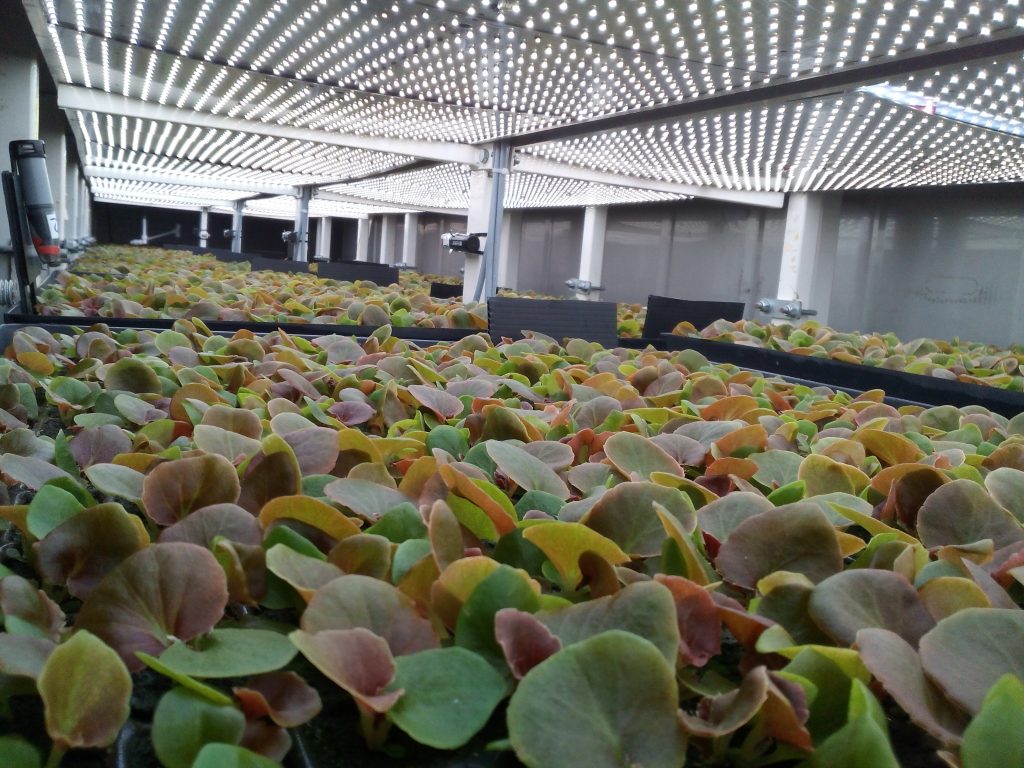Micro–Climate Modelling and Engineering Design for an Optimized Grow–Cell Prototype
Lancaster University, Doctor of Philosophy, 2017
Supervisor: C.J. Taylor
Abstract
This thesis is concerned with controlled environment horticulture, with a particular focus on two practical examples, namely a laboratory scale forced ventilation chamber and a full–sized prototype grow–cell developed in collaboration with an industry partner. The grow–cell belongs to a relatively new category of plant factory in the horticultural industry, for which the motivation is the maximization of production and the minimization of energy consumption. Significantly, the plants are grown under artificial lights and there is recycling of water.
The thesis is organized into two main parts. Part A of the thesis takes a systems design approach to identify the engineering requirements of the new grow–cell facility, with the prototype based on a 12 m by 2.4 m by 2.5 m shipping container. Research contributions are made in respect to: (i) the design of a novel conveyor–irrigation system for mechanical movement of plants; (ii) tuning of the artificial light intensity; and (iii) investigations into the environmental conditions inside the grow–cell. In particular, the conveyor–irrigation and lighting systems are optimized by the author to make the proposed grow–cell more effective and sustainable. In future research, the prototype unit thus developed can be used to investigate production rates, plant quality and whole system operating costs. Nonetheless, preliminary growth trials reported within the thesis, demonstrate that Begonias semperflorens and Impatiens divine can be harvested to the satisfaction of a commercial grower.
The prototype has a standard commercial air–conditioning unit to maintain the required temperature and humidity set points. However, data collected by the author from a distributed sensor array demonstrates heterogeneous conditions arising during the growth trials. Hence, the research associated with Part B of the thesis concerns the development of a novel data–based approach for the modelling and control of micro–climate in a building or room, with a particular focus on thermal stratification. In particular, use of statistical clustering techniques are investigated for the partitioning of indoor environment into a number of zones that have a relatively uniform thermal behaviour. The quantitative data–driven approach proposed here, first characterizes the system dynamics using measured data and, secondly, exploits Agglomerative Hierarchical Clustering (AHC) and k–means clustering to determine the thermal zones. The practical utility of the new approach is evaluated using the laboratory example i.e. a 2 m by 1 m by 2 m chamber with two axial fans, a heating element, and an array of thermocouples. In this case, the modelling approach yields Hammerstein type models which are subsequently used for both single and multi–zone control system design. The laboratory facility was used for this research since it was readily available for these closed–loop control experiments.
The thesis concludes with recommendations for future developments in the micro–climate control unit for the grow–cell, and for further research into the grow–cell concept more generally.
